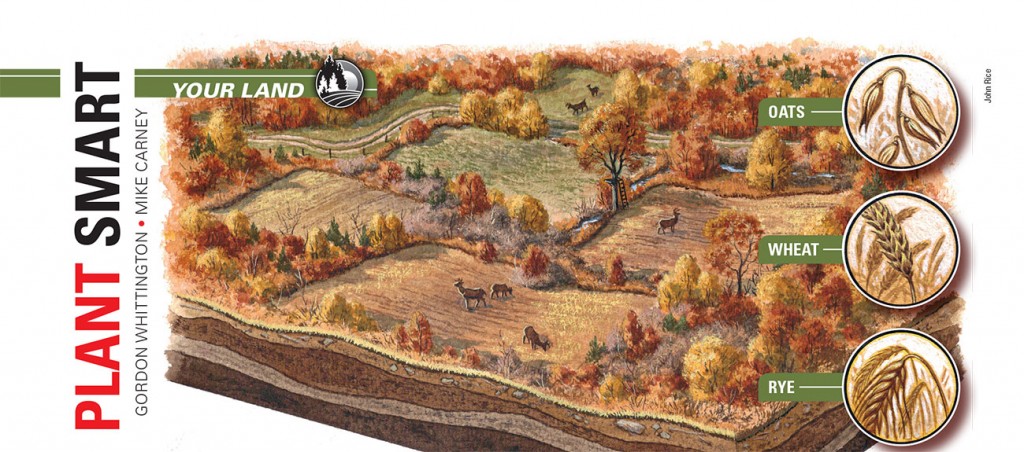September 27, 2012
By Gordon Whittington
 Cool-season food plots boost nutrition significantly, lessening winter stress and resulting in bigger, healthier deer for years to come. Prime fall plots will also hold deer, keeping young bucks with great potential from being mowed down 15 seconds after they hop over your boundary fence. Finally, cool-season plots make predicting where deer will be much easier — even during the helter-skelter rut.
Cool-season food plots boost nutrition significantly, lessening winter stress and resulting in bigger, healthier deer for years to come. Prime fall plots will also hold deer, keeping young bucks with great potential from being mowed down 15 seconds after they hop over your boundary fence. Finally, cool-season plots make predicting where deer will be much easier — even during the helter-skelter rut.
Best Plot Plantings
Oats, rye, and winter wheat are three key cool-season cereal grains that are excellent attractors with high nutritional benefits. Depending upon the goal desired, they are listed in order of trait strength.
Advertisement
- 1. Provide excellent deer attraction during daylight hours (O/W/R).
- 2. Great cool-weather nutrition (O/W/R).
- 3. Hearty growing persistence in very cold temperatures (R/W).
Advertisement
- 4. Ease of establishment (R/O/W).
Match Your Soil
In poor soils and those with low PH, opt for rye; in well-drained, sandy loam to clay soil with a PH of at least 6.0, use oats or rye. In lighter textured, more prepared soil with PH up to 7.0, go with wheat, oats or rye. Oats are generally recognized as the preferred cereal grain for harvest plot scenarios; opt for winter-hardy varieties like Buck Forage Oats. If broadcast sown, establish grains separately at 100 lbs an acre (30% less when drilled) or with wheat or rye in equal ratios in a prepared bed with 300 lbs of 19-19-19 fertilizer.
Ultra-Attractors
For the ultimate in attraction, nutrition and
persistence from fall into late winter and spring, mix oats with cool-season legumes, such as highly palatable Austrian winter peas and red or white clovers at 60/20/20-lbs ratio per acre (60 lbs wheat, 20 lbs winter peas, 20 lbs of clovers). Legumes add high attraction in the fall (winter peas) and nutrition in early spring and summer (clovers) as cool season grasses mature.

